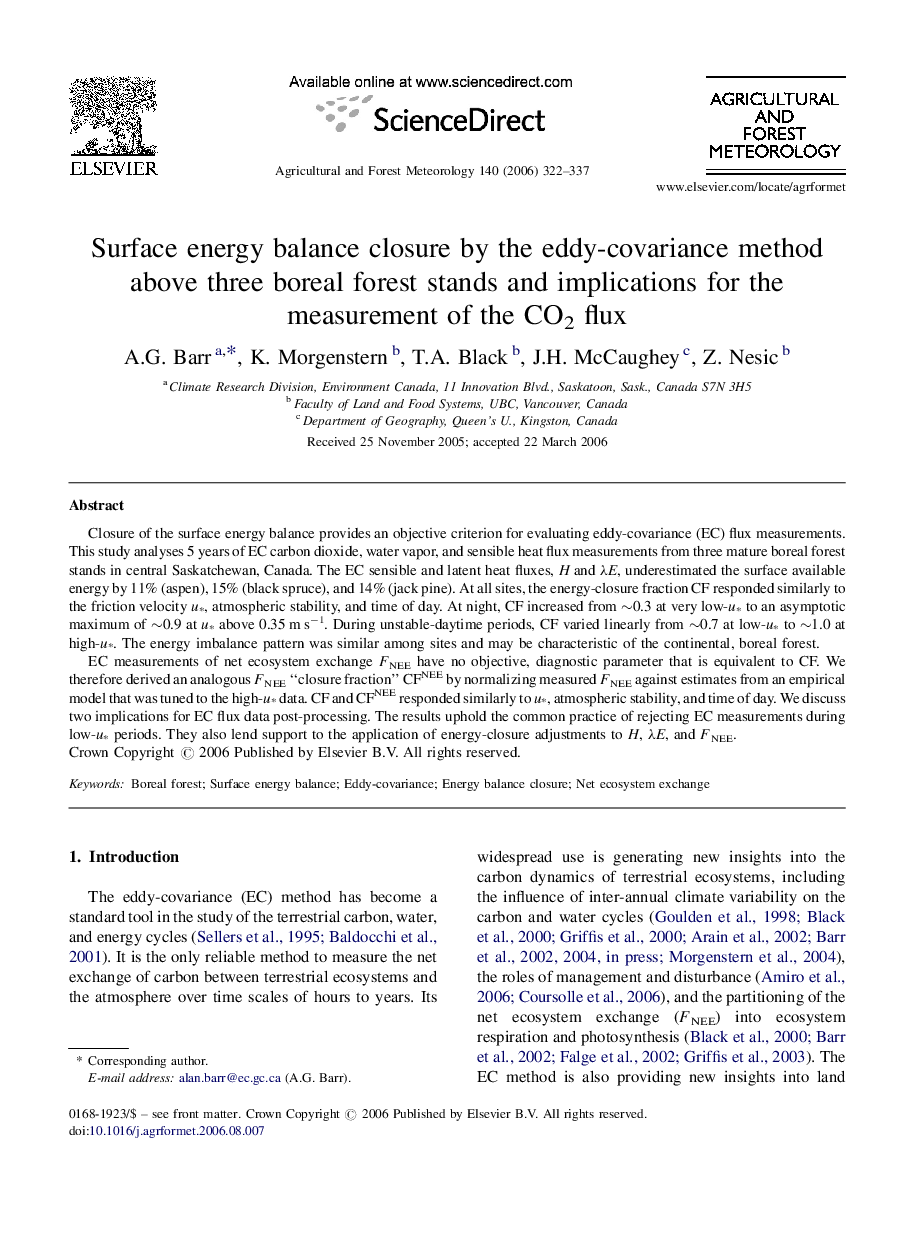| Article ID | Journal | Published Year | Pages | File Type |
|---|---|---|---|---|
| 83003 | Agricultural and Forest Meteorology | 2006 | 16 Pages |
Closure of the surface energy balance provides an objective criterion for evaluating eddy-covariance (EC) flux measurements. This study analyses 5 years of EC carbon dioxide, water vapor, and sensible heat flux measurements from three mature boreal forest stands in central Saskatchewan, Canada. The EC sensible and latent heat fluxes, H and λE, underestimated the surface available energy by 11% (aspen), 15% (black spruce), and 14% (jack pine). At all sites, the energy-closure fraction CF responded similarly to the friction velocity u*, atmospheric stability, and time of day. At night, CF increased from ∼0.3 at very low-u* to an asymptotic maximum of ∼0.9 at u* above 0.35 m s−1. During unstable-daytime periods, CF varied linearly from ∼0.7 at low-u* to ∼1.0 at high-u*. The energy imbalance pattern was similar among sites and may be characteristic of the continental, boreal forest.EC measurements of net ecosystem exchange FNEE have no objective, diagnostic parameter that is equivalent to CF. We therefore derived an analogous FNEE “closure fraction” CFNEE by normalizing measured FNEE against estimates from an empirical model that was tuned to the high-u* data. CF and CFNEE responded similarly to u*, atmospheric stability, and time of day. We discuss two implications for EC flux data post-processing. The results uphold the common practice of rejecting EC measurements during low-u* periods. They also lend support to the application of energy-closure adjustments to H, λE, and FNEE.
